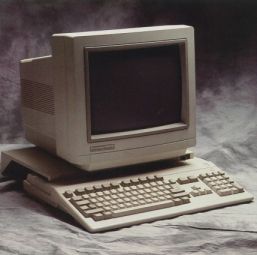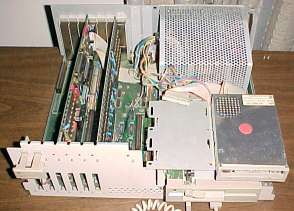Emulation
 Emulation
Discs
Emulation
Discs
All the below systems are emulated on these discs.


Amiga 500 Launched: 1987
In 1987 Commodore released the A500 - a cheaper version of the A1000 - which came in the "distinct" Commodore box. The basic system still used the 68000 processor, 512k ram, and OCS chipset but had got rid of the ZORRO slots in favour of a DMA slot at the side of the machine.
The operating system had been upgraded to version 1.3, which included the Amiga Command Line Interface (Shell) allowing the user more functionality.
This is the machine that kicked the entire Amiga world into focus and brought more people to the Amiga than has been done since.
Amiga 1000 Launched: July 23, 1985 Discontinued: January 1987
Commodore launched the Commodore Amiga in a grandiose show at the Lincoln
Center in New York on July 23, 1985. The machine itself was based upon the
earlier Lorraine project. The unit went on sale a few months later, retailing
at $1295.00 US dollars.
The company were pressured by Atari to launch the Commodore Amiga ahead of their original schedule . The company had attempted to buy the Amiga technology but had been forced to develop their own 68000 machine based upon off-the-shelf parts. In spite of a shorter development time, the Atari 520ST beat the Commodore Amiga to the market by several months. As a result, Amiga Workbench 1.1 (the Amiga disk based OS) was buggy and prone to crashes. Click here for Amiga 1000 Technical Specs
Amiga 2000 Launched: March 1987 Discontinued: 1990
Two years after the initial Amiga launch, Commodore released their replacement to the ageing Amiga 1000. The Amiga 2000 developed the 'big box' Amiga market that continued to divide users' until the mid-1990s, and formed the second part of Commodore's plans to diversify the Amiga market into high and low end systems (the low-end A500 had been launched two months previous). Like the Amiga 500, the A2000 was shipped with Kickstart/Workbench 1.2.
The machine offered several advantages over the Amiga 1000 and 500:
Seven internal expansion slots (5x 100 pin Amiga Zorro II and 2 x 16-bit
ISA slots). The ISA slots were disabled by default (only power and ground
pins activated), but could be used when a Commodore bridgeboard was installed
(a PC-on-a-card). Inactive slots can be used for non intelligent cards like
TBCs or fan cards.
One megabyte memory as standard (expandable to 9MB).
The initial release was unpopular among several Amiga developers, including
the original Amiga Los Gatos team. In an attempt to address many of these
complaints, Commodore produced two major updates and numerous revisions to
the A2000 design during the 1987 - 1990 time period.

